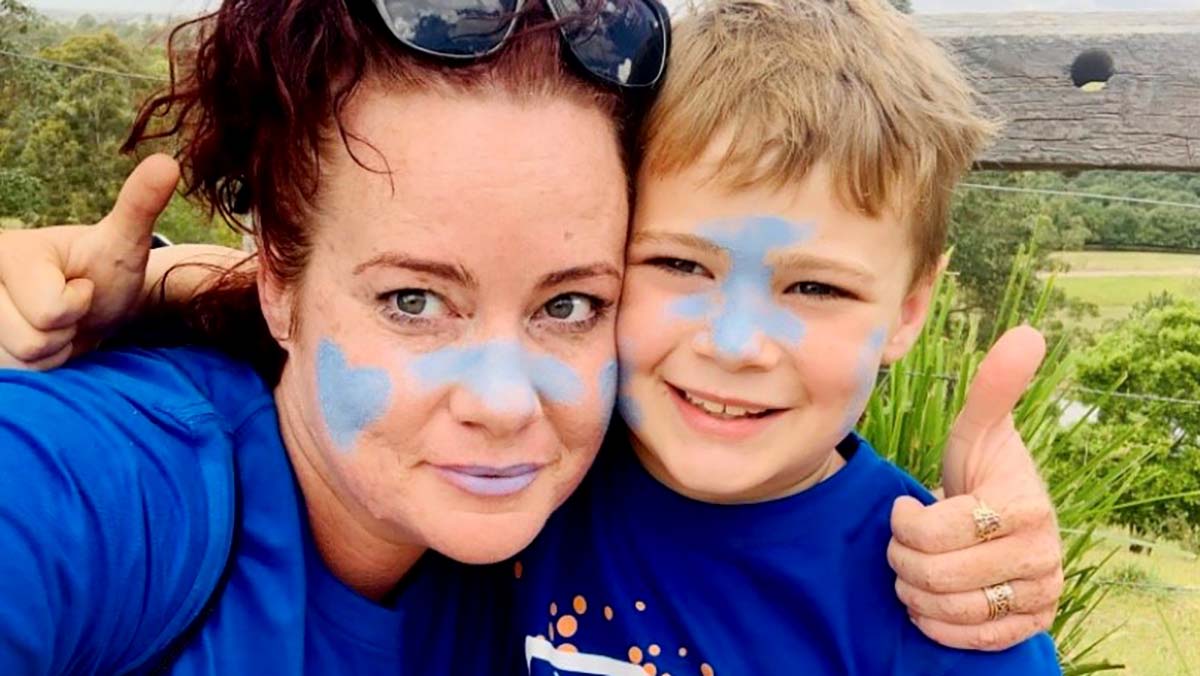It all started when we noticed some out-of-character behaviour in my son. He was extra thirsty, always wanting to drink more water. He would also take a lot of trips to the toilet and started wetting the bed overnight—something he had never done before.
My son became more irritable and more tired. He also started losing weight, which was extremely concerning.
Something didn’t feel right to me. He had never acted this way before and had never experienced these symptoms previously. We decided to visit the doctor to get some answers.
The diagnosis
My son had just turned five years old when he was diagnosed with type 1 diabetes.
Following a chat with our local GP, they decided to take a urine sample for ketones. When they saw the results, they looked at me and said, “It is diabetes. I’m going to ring the hospital and let them know you are on your way.”
I had to take a few deep breaths and try my best to remain calm. It was confirmation that matched a mother’s instinct that something was not quite right. Life as my son knew it was about to turn upside down.
I remember all these thoughts swirling around my head: What does this mean? How can this be?
The learning
Amongst all the emotions of learning about my son’s diagnosis, it was vital to quickly adapt to his needs and learn what would help make his life a little easier. When you have a child with type 1 diabetes, you need to learn new skills fast in order not only to keep your child healthy, but to keep them alive.
Type 1 diabetes is an autoimmune condition where the immune system tries to destroy cells in the pancreas, the organ responsible for insulin production. Without insulin, glucose stays in your blood, causing the blood glucose levels to spike, which which can lead to long-term health complications.
We had so much to think about each hour of the day, which meant solid sleep became a thing of the past and constant calculations became the new normal. Careful planning day-in-day-out became vital.
We tried to take a positive approach into every situation, and investigated ways my son could continue safely participating in activities such as swimming and rugby league.
The treatment
We started with insulin injections and finger pricks to treat my son’s diabetes. It seemed to be the easiest way to begin the journey while we learnt carb counting to help keep his blood glucose levels in range.
However, insulin injections and finger pricks were challenging for my child who loves to graze on food. It also filled him with anxiety. He would plead, “Please, no more needles,” while hiding under the table.
It hurt to see him in so much distress, so we knew it was time for a change: My son started therapy on an insulin pump. It’s a small electronic device that replaces the need to give multiple injections daily. It does so by delivering a continuous dose of rapid-acting insulin throughout the day and night.

My son was quick to learn that the pump was to remain attached to him at all times. Although this amazing device took the anxiety of injections away, it did come with some downsides:
- The cord often got tangled and pulled the cannula, which hurt him.
- The device was bulky and needed to come off when he participated in physical activities such as rugby league, boxing, motorbike riding or even yabby catching in the dam.
- It wasn’t waterproof and would get damaged if submerged.
I remember when we were on a family trip. All the kids were playing together and raced to the pool. All of us were yelling, “Stop!” when my son got caught up in the moment and jumped in the pool.
The conventional insulin pump he was using added limitations to his life. Spontaneous moments like the simple act of jumping in a pool were a thing of the past, and all activities had to be carefully planned so that his insulin flow wasn’t interrupted.
At the end of the day, it took all the fun out of being a kid.
The new technology
Early last year, Omnipod sent us information about a trial program. Omnipod is a tubeless, wireless insulin management system that provides continuous insulin for 72 hours.
It sounded like the perfect option for our active, adventurous boy’s lifestyle. The device has allowed him to be an active child without needing to take the device off and on during activities and showering. It has given my son a sense of freedom and spontaneity, and as he says, “No more cords means more fun!”
He can even change his pod by himself—with supervision—following prompts on his personal diabetes manager.
Omnipod is now included on the National Diabetes Services Scheme for Australians living with type 1 diabetes. This significantly reduces the financial burden for someone to access Omnipod.
How helpful was this article?
Click on a star to rate it!
5 / 5. 1
Be the first to rate this post!
Kylie Wild
Related posts
Subscribe
Receive personalised articles from experts and wellness inspiration weekly!

